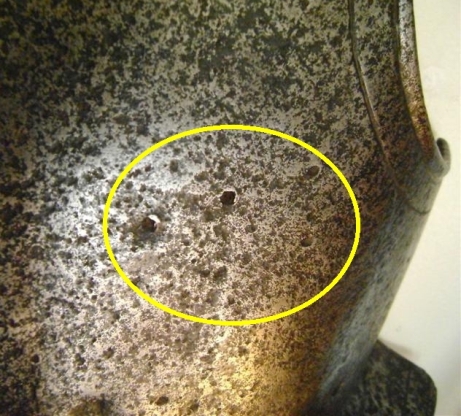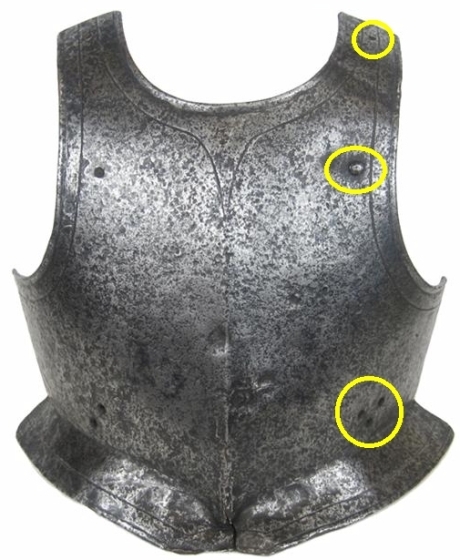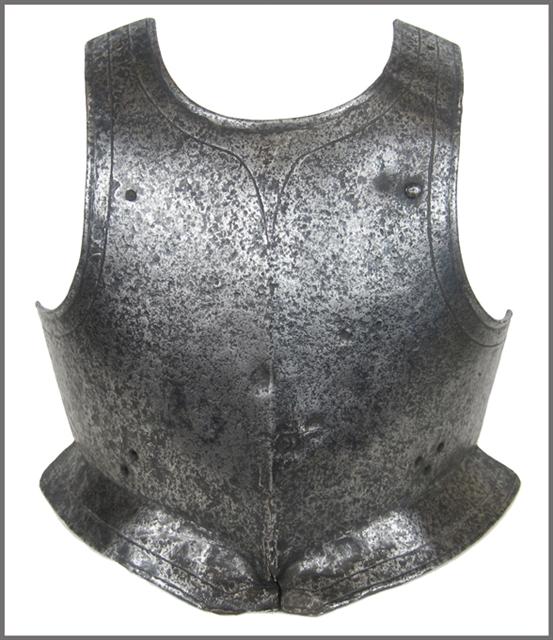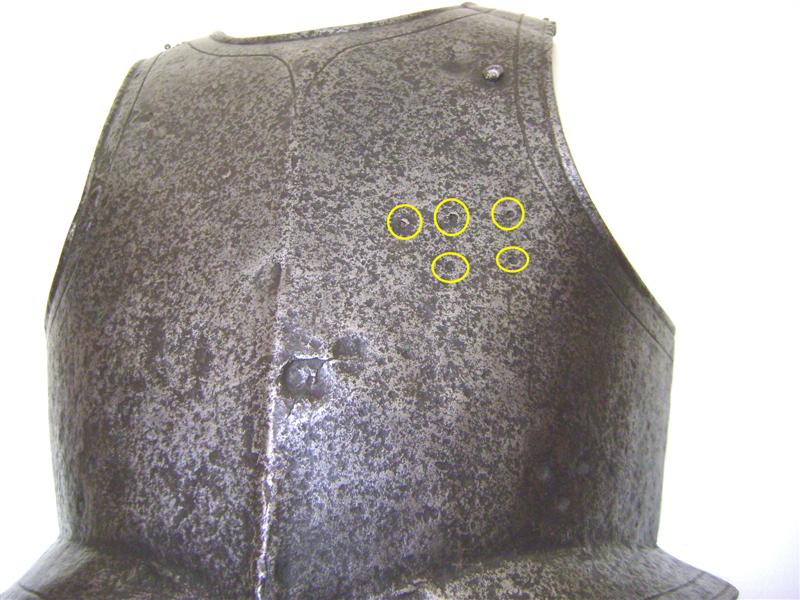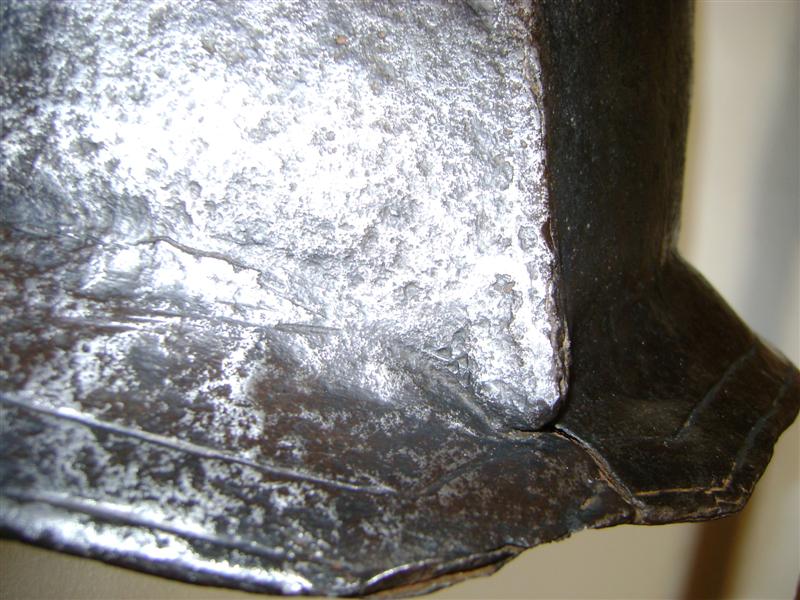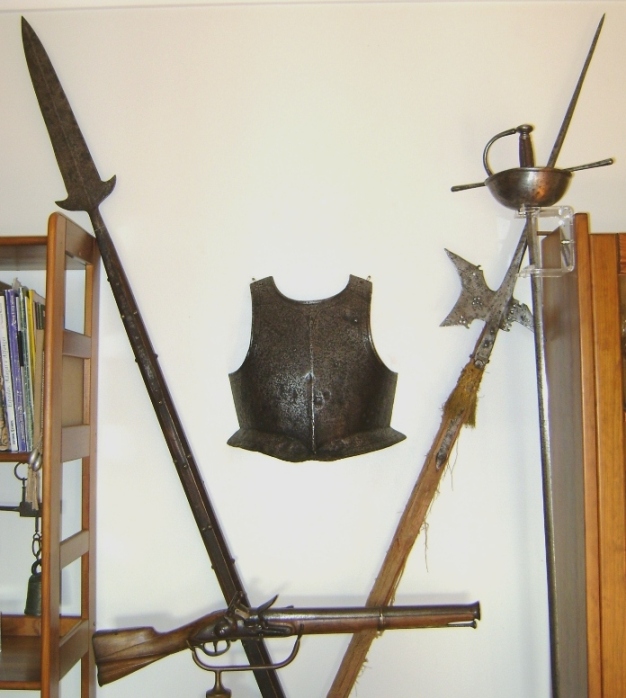Seller dated it 16th century; wouldn't it be later?
It was tagged as European. I believe so; anyway, i have acquired it from a Spanish selling site.
Height: 35 cms.
Thickness: varying from 2 to 4 mm.
It appears to be a cavalry specimen, judging by that litte recess i the bottom, to fit the saddle ... is this a correct inferrement?
Comparing to the general specs. that i have observed in the Wallace collection catalogue, this is a rather heavy example, with its 4,4 Kgs (nearly 10 pounds).
I am a bit lost with the (missing rivets) holes. Could some be for the usual strapping to the backplate and (maybe) to the tassets ? But the holes i find more intriguing are a set of smaller ones on the left chest, however too low for holding a tilt shoulder (pauldron), i would say.
Could they be for some kind of decoration or indeed for some armour device?
One thing i have just read is that, apparently, Portuguese didn't make armour, instead imported it from Italy and Germany.
However Spaniards did. But if the seller tags this example as being European, could be because he has reasons to beleive this is not Spanish.
Amazing thing: While i was searching for info on these items, i have read that they used to be tested with a musket shot from a regulation distance, resulting that many surviving specimens still keep the mark of such shot.
I wonder if the dimple that is visible on the center of this example was a result of such test .
Your kind coments will be much welcome ... as also your tolerance for the ignorant way i am asking the questions; i know nothing about armour.
Fernando
.
